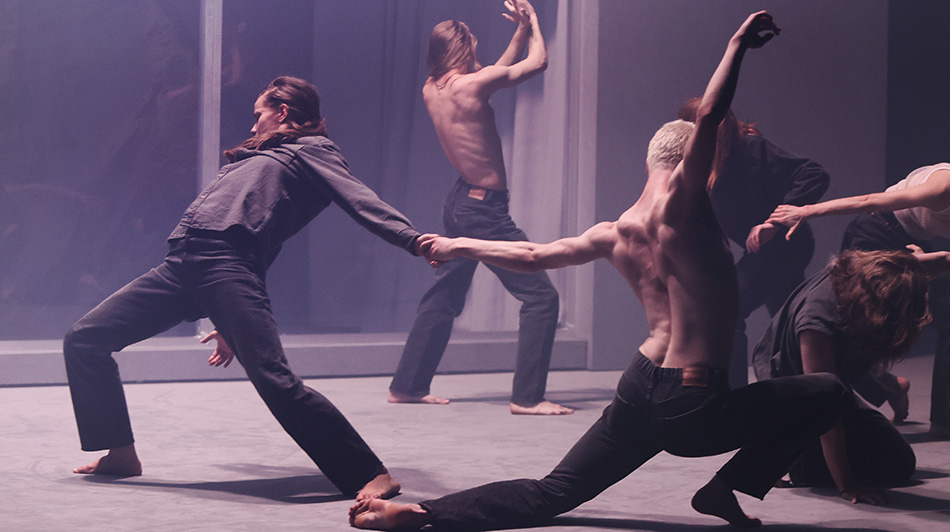Ever noticed that many retailers, restaurants, malls, other brands with physical locations as a component of their experiences have a disconnected approach to the music with which they present their brands?
They take one musical approach to branding in their advertising and a completely different approach in their live environments. The story is virtually the same at branches, in salons, in restaurants, and at dealerships.
When music is perceived as a good fit for the brand, the user perceives the brand as more authentic. A brand provides a promise to behave a certain way. The audience should experience the place where it encounters your brand as embodying your brand values.
One day, while traveling south, Michaël Boumendil noticed that the same music he had heard in the corridor of Atlanta’s Hartsfield-Jackson was what he was hearing in Miami International. Yet Atlanta and Miami are both such distinctive brands! These cities come with strong musical heritages of their own, and both compete hard for convention and tourist business, but they didn’t infuse any local flavor into the atmosphere of the corridors or lounges that so many of their visitors pass through.
Then there’s the problem of announcements.
Most airports solve the problem of getting people to hear announcements by pushing up the volume, not by providing a pleasant attention-getting signal. Most in-store messages don’t take into account the sounds of carts, conversation, and HVAC. For instance, at a national supermarket, a survey revealed that only 5% of their customers were hearing the messages. Their announcements of specials and events were blending in and when they were noticed, according to our client’s research, they were often perceived as radio, not as a communication to customers from the store they’re shopping in – clearly a wasted opportunity but not a terribly hard one to fix.
What to do? Sorry to sound like a broken record. It’s all about values.
So how do you manage the brand experience, the need to address specials, warnings, and announcements, the employee state-of mind, the tastes and aspirations of the shopper?
One approach is to choose music that fits your brand values, essence, and personality.
If audio branding can help you find your way to the brand identity and guide your various tactics, it can also guide you to your wider brand territory of music at retail and in other environments where your brand lives. You can have distinctive, unexpected and brand-supportive music in store if you lay your groundwork first.
One approach is to create a sample playlist for each of the key values the brand intends to express and then, based on the importance of each value, choose the right proportion of each type of content.
One brand’s values and music filters: authenticity, intimacy, audacity, and virtuosity
What follows are short summaries that illustrate how the values-based sample playlists would guide the music selection for clothing retailer.
Authenticity:
Here, noble, acoustic instruments such as cello, double bass, upright piano, or woodwinds were explored. These classical instruments, however, are played in a modern and contemporary way, favoring a light and positive approach rather than one that’s impressive and imposing. These help create a warm atmosphere that’s both elegant and welcoming.
Intimacy:
The goal here would be to recreate the magic moments of a private concert. Some live songs have been included,, but not exceptionally dramatic ones. As in a private club, the sound would be sophisticated but not “trendy,” creating a convivial and friendly atmosphere.
Audacity:
The brand includes culture as well creativity, and the intellectual playfulness that entails. So the music offers dashes of optimism and charm. The selection of music in this group would add a feeling of energy, creativity, and playfulness, and contain references to art, in order to bring out the child, and the artist in everyone in the store.”
Let’s contrast that to a different high-end brand. This time, at a later stage of the process. This brand stands for elegance, luxury, and beauty. Let’s magine the strategy and music selection have been approved and the project has moved to launch.
The handiest way to keep the global teams aligned with the strategy is the Audio Style Guide. This guide has two functions, to help staff understand the reasoning behind the selection and to set parameters. But you can see it also allows for some flexibility at the store-level: Here an excerpt, “… an eclectic selection, both classic and contemporary, where sensuality and creativity have been explored. Hints of cinema and opera, exceptional voices as well as timeless songs of French musical heritage and avant-guard pieces of music.. A daring mix, for a unique and innovative musical ambience.”
This music had been pre-programmed so a shuffle option enabled any playlist to be played randomly at any time of the day. However, employees could modify the pre-set selection and program the broadcasting. They had the option to to control the musical ambiance in their boutique or let it run on its own. 50 hours of music were provided with quarterly updates of 14 hours of additional music.
- First playlist offers soft and soothing music for a luxurous atmosphere
- Second playlist provides a selection of rhythmic music
- Third playlist combines calm music balanced with more rhythmic tracks
Bringing the shopper back to the spirit of brand
Beyond establishing the brand territory of the selected music, we also use sound to bring shoppers back to the brand after every few songs. This can be done with a light touch, so it adds pleasure to the customer experience rather than beating them over the head with repetitive communications. The brand, in this example, is reinforced by what we call “winks” or “commas.” They can’t be bossy and they shouldn’t intimate that “We’re the management here and don’t you forget it!” (This tendency is particularly prevalent among transportation systems). The winks suggest a friendly relationship with the customer. After all, little bit of humor, nostalgia, or reassurance doesn’t hurt.
Closely related to branded “winks” are signals that precede any announcement. But, in contrast, their purpose is to draw your attention to a piece of information, rather than to charm you into a smile or a feeling of belonging. It’s not necessary to project the voice of authority; you might do better to create affinity. In cases where there are many announcements to be made, you may even want an interrelated system of signals. An example, one for basic, repeating announcements, one for real news and one for emergencies.
- For Petit Bateau, the brand pulls you back with snatches of children’s voices counting, questioning, conversing and, sometimes, just exuberantly shouting, “Petit Bateau”
- Fiat Motor Village, each auto line was given its own audio footprint. These short pieces all live within the same musical universe but each reflects the special personality of that distinct brand: Alfa Romeo, Abarth, Lancia, Maserati and Jeep. There’s also a short, evocative musical piece that weaves in the sound of an early motorcar and underscores the long heritage the umbrella brand, Fiat.
- For the aforementioned luxury brand, these special brand sounds consisted of a collection of pieces that began with a 6-7 second glittering fountain of diamonds and then led into a snippet of a song by an iconic actress or singer from the 40s and 50s. This approach underscored the twinkling, glamorous heritage of the brand.
- For an elegant men’s shoes and clothing brand, the musical winks underscored their craftsmanship. Sprinkled among the musical selections, you could hear the sounds of instrumentalists practicing their scales or working on their fingering in short exercises that classically trained musician use. The idea: To highlight the practice that goes into mastering a craft and to create the sense of intimacy that might occur in a master’s studio.
Closely related to branded “winks” are signals that precede any announcement. But, in contrast, their purpose is to draw your attention to a piece of information, rather than to charm you into a smile or a feeling of belonging. In the case of SNCF, the French national railroad, the importance of being sensitive to the audience’s potential anxieties weighed into the creation of the signal that precedes announcements. Rather than project the voice of authority; they chose to create affinity with a signal whose primary instrument was the female voice.
Zoning and dayparting: creating specific moods within the same environment
Customers may have very different music needs in different parts of your establishment. Take a hotel, for instance, where the same guest may respond to same music differently depending on whether he or she is in the fitness center, the business services center, the elevator lobby, or in the bar. The practice of breaking the space down into key zones helps the music planner think through the specific spaces and preferred ambiances.
The guest also may prefer different moods at different times of day as well. For instance, while enjoying a relaxing lunch they might prefer a quietly energizing sound. But in the evening, it’s more likely to be party time at the bar, calling for not just a more lively, spirited style of music but a change in music volume as well. That is where dayparting comes in. A good plan will take into account the shift in atmosphere needed, especially in social areas.
All of us have been in establishments in which the music is mismanaged. No amount of interior design, technological marvels, or even customer service can help override it. This sensitivity is underscored by personal experience. In a business hotel one night, the staff saw fit to play “The Ride of the Valkyries” for the edification of the bedraggled transatlantic travelers checking in after a very late night flight. That night, any small snafu resulted in angry outbursts or frustrated tears. Exhaustion may have played a role but, you and I both know, the tumultuous and piercing music was largely to blame.
This brings us to another best practice in the world of environmental music design: Not only should you provide examples of the kind of music that is appropriate, you should also give examples of what’s not acceptable – especially if your business is being run by franchisees, remote managers, or rotating leaders In the case of the aforementioned hotel, perhaps the team believed that they were supposed to play selections from the “Western classical music tradition” but the guidelines had neglected to exclude certain types of sections that might be inappropriate, if not downright painful.
Along the same lines, an establishment may wish to support different products or services with different musical moods. Imagine a store that sells jewelry in one department as well as warm winter coats in another. Chances are the visual environment in each section has been designed differently to support the product mix. But what about the sound?
With the use of music, it’s possible to create a stylish. sparkling atmosphere in one and a comforting, cozy atmosphere in the other while staying within the brand’s guardrails. As music has a way of raising sales of the products that are perceived as being congruent with it, the better the fit, the stronger the effect.
Need some examples on how to provide the instructions? To help, here are some excerpts from the Music Guidelines created for a hotel chain. They aimed to create an ambience in which people came to meet and to mix together in a place that provided both comfort and energy. So the guidelines recommended a balance among four categories: 1) friendliness and warmth, through positive, comfortable music; 2) modernity by using today’s music; 3) elegance using refined musical genres; and 4) regional variation (within boundaries).
It also describes what music should make up the total experience and defines the type of music for specific areas of the hotel: Lobby, Bar, Restaurant, Fitness and Spa Lounge and Executive Lounge. For instance, the recommended mood for the reception, waiting area, meeting areas and elevator lobbies during the daytime was “discreet, soothing, conducive to working and relaxation” with music played at a soft volume. Conversely, the bar in the evening had the goal of creating a rousing, spirited atmosphere via modern, rhythmic dance-like music. Here the recommended genres were “electronic, electro-jazz, lounge, and rhythmic pop” played at a high volume.
The “Do Nots” of the guide also tell a lot about what to expect by warning against:
- aggressive and intrusive
- experimental and irritating
- inelegant and vulgar
- too heavily orchestrated
- loud singing
These recommendations were accompanied with music playlists demonstrating examples in each genre that indicated what was too baroque, too cliché, too ethnic or too showy.
Environmental sounds: great opportunities for wit and humor
What better way to create a sense of relationship with customers than to surprise them with some little unexpected moments of humor or delight?
Thus, mermaids sing in the ladies room of a mall at the confluence of two rivers; a plant wall is transformed into a tropical rainforest waking in the morning; the clacking of local stork beaks provide the percussion for a town’s shopping center; and some waiting area chairs lead you through a relaxing meditation. You never know what will be around the next corner.
These artful touches show your humanity and your interest in delighting your customers. And by adding pleasure to people’s journey, you create more affinity for your brand. After all, isn’t affinity a key goal of branding? If your branding a mall, retail environments, restaurants, entertainment venues, sports stadiums, hospitals, or other place that people congregate, think what you can do make the experience even a little better through the sounds of your brand.
Written by Colleen Fahey, US Managing Director









